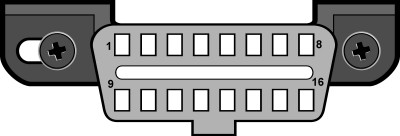Is your E46 M3 throwing a C2500 trouble code? Understanding your car’s On-Board Diagnostics (OBD-II) system is crucial for diagnosis and repair. This article clarifies OBD-II compliance for various vehicle models, including the E46 M3, and guides you through determining compatibility with OBD-II diagnostic tools like OBDLink adapters.
OBD-II standardization ensures that vehicles manufactured after specific dates are equipped with a universal diagnostic system. This system allows external devices, such as code readers and scan tools, to access diagnostic trouble codes (DTCs) like the C2500, monitor performance data, and assist in troubleshooting.
OBD-II Compliance in the United States
All cars and light trucks sold in the US from model year 1996 onwards are mandated by law to be OBD-II compliant. This includes the E46 M3, which was produced from 2000 to 2006. The Environmental Protection Agency (EPA) website provides further details on US OBD-II regulations.
OBDLink adapters are compatible with a broad range of vehicles sold in the US, including BMW models.
International OBD-II Compliance
OBD-II compliance varies globally depending on the country or region where the vehicle was originally intended for sale.
To determine if your vehicle is OBD-II compliant, refer to the table below outlining compliance dates by country:
| Country of Sale | Full OBD-II Compliance | Limited OBD-II Compliance |
|---|---|---|
| European Union (Petrol) | 2002 | 2001 |
| European Union (Diesel) | 2007 | 2004-2006 |
| Canada | 1998 | |
| Japan | 2008 | 2003-2007 |
| … | … | … |
(This is not an exhaustive list. Consult the full table in the original document for a comprehensive overview.)
As the E46 M3 was primarily sold in markets adopting EOBD (European OBD), your vehicle should be compliant even if sold outside the US. However, confirming the compliance year based on your specific region is essential.
European Union OBD Regulations: Petrol and Diesel Vehicles
For vehicles sold within the European Union:
- Gasoline vehicles: Model year 2001 and later generally comply with OBD-II under Commission Directive 70/220/EEC.
- Diesel vehicles: Full compliance started with model year 2004 for vehicles falling under specific category M1 criteria outlined in the same directive.
Identifying OBD-II Compliance in Other Vehicles
If your vehicle doesn’t fall under the previously mentioned categories, check under the hood for a Vehicle Emission Control Information label explicitly stating OBD-II compliance (California ARB, EOBD, or JOBD). Consulting your owner’s manual or contacting your dealer might provide further clarification.
The 16-Pin Connector and OBD-II Compliance
The presence of a 16-pin connector doesn’t automatically guarantee OBD-II compliance. While the E46 M3 does utilize this connector, many older vehicles feature it without implementing the full OBD-II protocol. Ensure your vehicle’s Data Link Connector (DLC) adheres to the SAE J1962 standard.
 SAE J1962 Connector
SAE J1962 Connector
Figure: J1962 Vehicle Connector, Type A
Conclusion
Determining OBD-II compliance is crucial for utilizing diagnostic tools like OBDLink adapters to troubleshoot issues such as the C2500 trouble code in your E46 M3. By following the guidelines in this article and referencing the provided resources, you can confirm compatibility and take the necessary steps to diagnose and resolve any automotive problems. If you are still unsure, consult a qualified automotive technician.